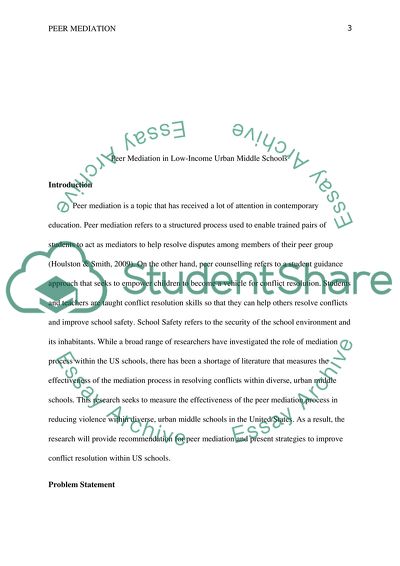Cite this document
(Peer Mediation in Low-Income Urban Middle Schools - the George Research Proposal Example | Topics and Well Written Essays - 3500 words, n.d.)
Peer Mediation in Low-Income Urban Middle Schools - the George Research Proposal Example | Topics and Well Written Essays - 3500 words. https://studentshare.org/education/1861443-how-effective-is-peer-mediation-at-addressing-the-level-of-violence-in-diverse-urban-middle-schools-in-the-united-states
Peer Mediation in Low-Income Urban Middle Schools - the George Research Proposal Example | Topics and Well Written Essays - 3500 words. https://studentshare.org/education/1861443-how-effective-is-peer-mediation-at-addressing-the-level-of-violence-in-diverse-urban-middle-schools-in-the-united-states
(Peer Mediation in Low-Income Urban Middle Schools - the George Research Proposal Example | Topics and Well Written Essays - 3500 Words)
Peer Mediation in Low-Income Urban Middle Schools - the George Research Proposal Example | Topics and Well Written Essays - 3500 Words. https://studentshare.org/education/1861443-how-effective-is-peer-mediation-at-addressing-the-level-of-violence-in-diverse-urban-middle-schools-in-the-united-states.
Peer Mediation in Low-Income Urban Middle Schools - the George Research Proposal Example | Topics and Well Written Essays - 3500 Words. https://studentshare.org/education/1861443-how-effective-is-peer-mediation-at-addressing-the-level-of-violence-in-diverse-urban-middle-schools-in-the-united-states.
“Peer Mediation in Low-Income Urban Middle Schools - the George Research Proposal Example | Topics and Well Written Essays - 3500 Words”. https://studentshare.org/education/1861443-how-effective-is-peer-mediation-at-addressing-the-level-of-violence-in-diverse-urban-middle-schools-in-the-united-states.


